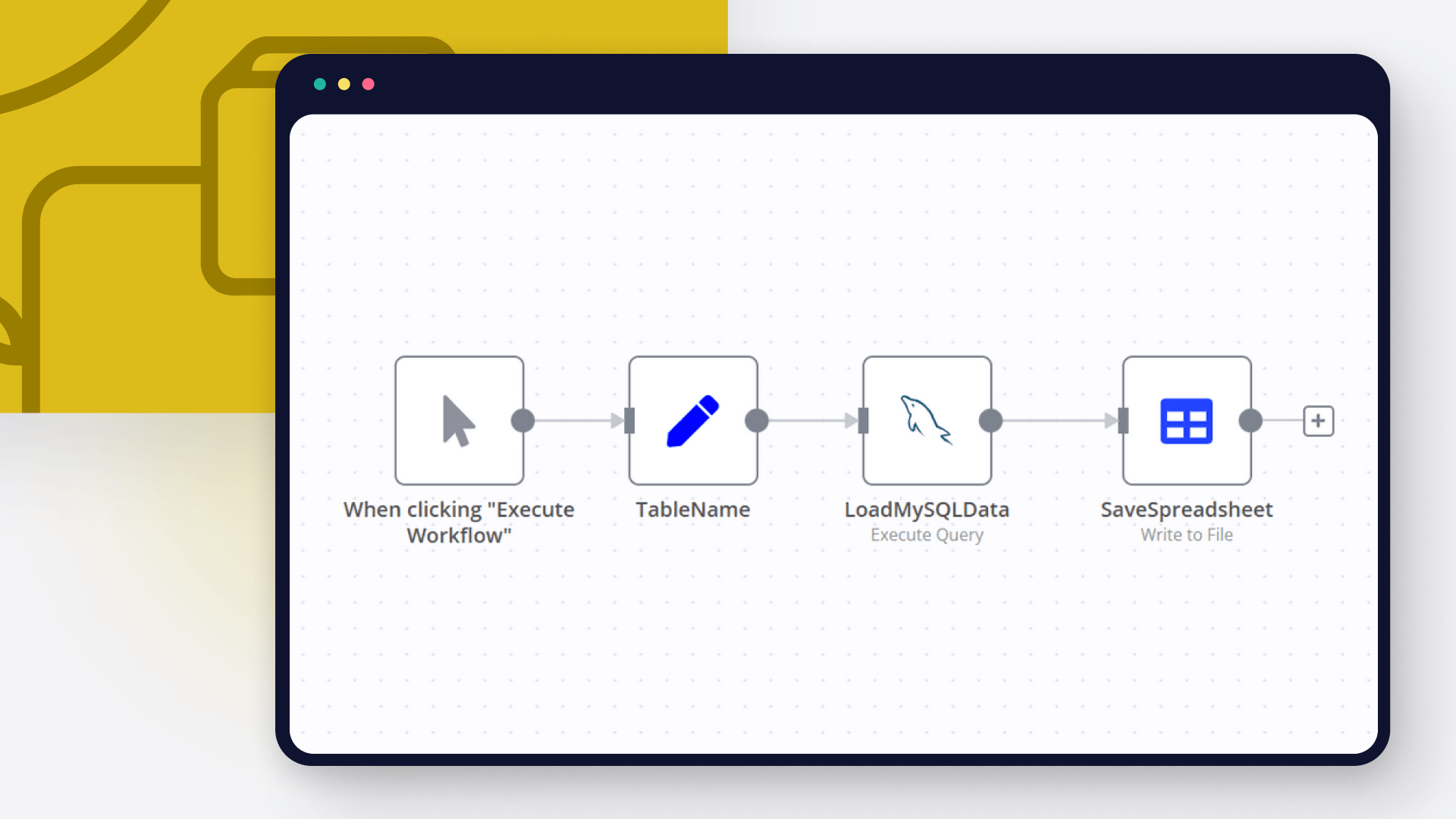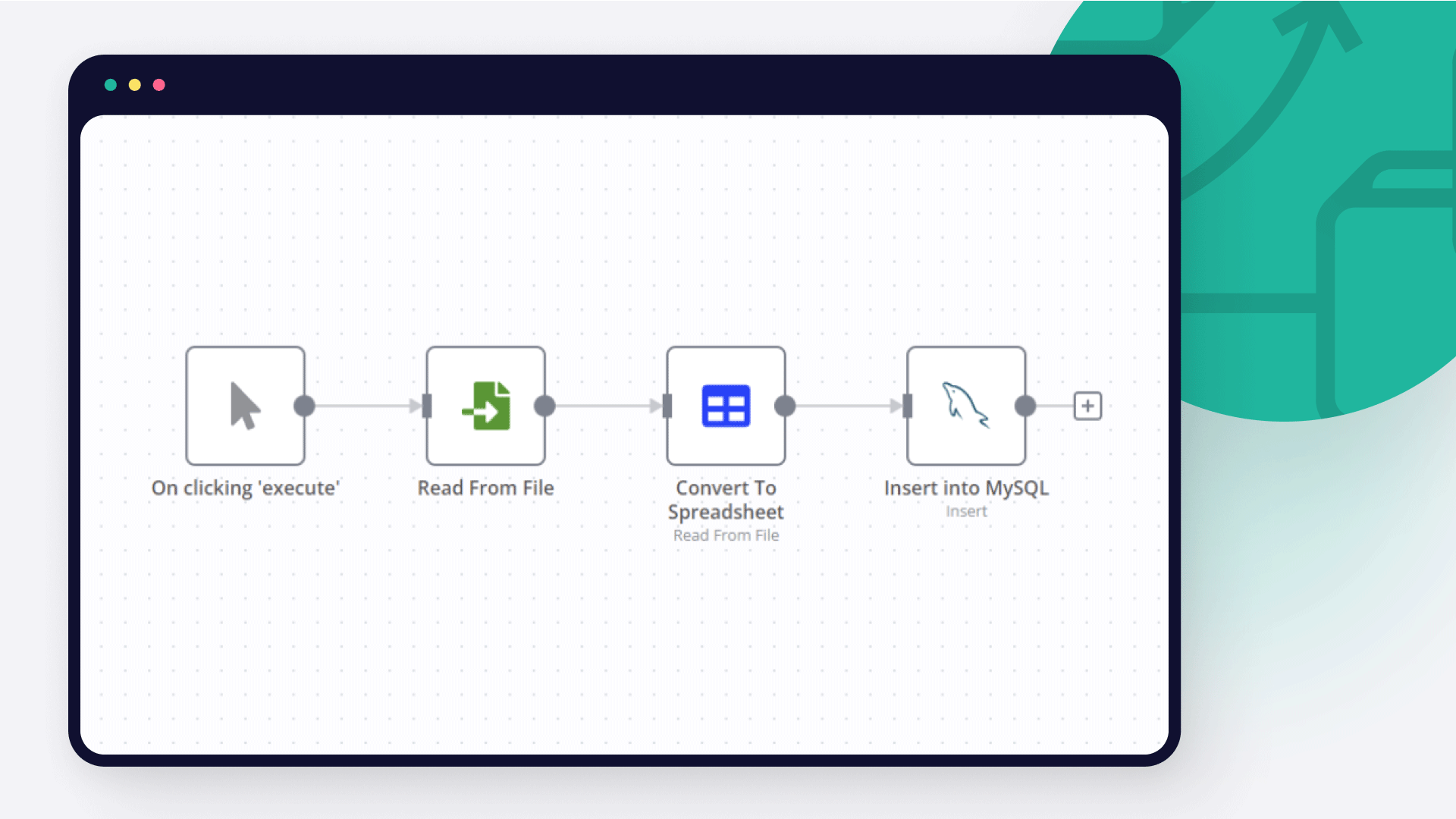Cloudinary and MySQL integration
Save yourself the work of writing custom integrations for Cloudinary and MySQL and use n8n instead. Build adaptable and scalable workflows that work with your technology stack. All within a building experience you will love.

How to connect Cloudinary and MySQL
Create a new workflow and add the first step
In n8n, click the "Add workflow" button in the Workflows tab to create a new workflow. Add the starting point – a trigger on when your workflow should run: an app event, a schedule, a webhook call, another workflow, an AI chat, or a manual trigger. Sometimes, the HTTP Request node might already serve as your starting point.
Build your own Cloudinary and MySQL integration
Create custom Cloudinary and MySQL workflows by choosing triggers and actions. Nodes come with global operations and settings, as well as app-specific parameters that can be configured. You can also use the HTTP Request node to query data from any app or service with a REST API.
What can you do with Cloudinary?
Upload From URL
Upload an asset from URL
Upload File
Upload an asset from file data
Update Asset Tags
Update tags for an existing asset
Update Asset Structured Metadata
Update structured metadata for an existing asset
Get Tags
Get all tags for a specific resource type
Get Metadata Fields
Get all metadata fields definitions
MySQL supported actions
Delete
Delete an entire table or rows in a table
Execute SQL
Execute an SQL query
Insert
Insert rows in a table
Insert or Update
Insert or update rows in a table
Select
Select rows from a table
Update
Update rows in a table
Cloudinary and MySQL integration details
Cloudinary and MySQL integration tutorials

How to work with XML and SQL using n8n
Break the boundaries of your workflow with SQL and XML in n8n. This extensive tutorial details how to export and import data, style XML with XSLT, and efficiently forward XML files for exponential productivity.

How to compare databases via the Compare Datasets node: a step-by-step tutorial
Learn to compare databases automatically, be it SQL tables or data from your favorite CRM. Grab this step-by-step tutorial with a free customizable workflow!

How to export SQL data to Excel in 3 ways
Follow this step-by-step tutorial on how to export SQL tables and queries to Excel using MS Excel itself, SSMS and n8n automation tool.

How to import CSV into MySQL: four techniques
Learn how to import CSV into MySQL databases using MySQL Workbench, SQL commands, NocoDB and n8n automation tool.

How to connect Google Sheets to MySQL: Code and no-code methods
Discover two ways to connect MySQL with Google Sheets, and learn to build no-code workflows for automating it.
FAQ
Can Cloudinary connect with MySQL?
Can I use Cloudinary’s API with n8n?
Can I use MySQL’s API with n8n?
Is n8n secure for integrating Cloudinary and MySQL?
How to get started with Cloudinary and MySQL integration in n8n.io?
Need help setting up your Cloudinary and MySQL integration?
Discover our latest community's recommendations and join the discussions about Cloudinary and MySQL integration.

Using variables
Mohammadali
Hi guys. I am getting certain data from my SQL database. I want to pass that data to an API. The data I get from the database contains this variable: {{ $input.item }} the problem is that I can not send the value of…
Open topic

MySQL Select and numbers
Michael Zareno
I have a MySQL table. Test data consists of an "Amount’ field, and three rows with values, 1000, My JSON input is: [ { "row_number": 2, "Amount": -1000 }, { "row_number": 3, "Amount": -52.23 }, …
Open topic

Migration error on fresh deployment of 1.45.2 in kubernetes
Neal A Richardson Sr
Describe the problem/error/question I’m trying to spin up an n8n instance in kubernetes as a fresh install. I have a database created and the connection works (it created 22 tables) but then the docker container bombs o…
Open topic

MySql node - Inserting NULL in MariaDB
GabrielBackend
Greetings, I’m trying to insert null values into my MariaDB using MySQL node. I need to use Execute SQL mode so I can call functions inside my db and do verifications in case of a update, for example IFNULL. There is n…
Open topic

Mysql node excutes for too long than we have the following error Connection lost: The server closed the connection. sql: undefined, code: PROTOCOL_CONNECTION_LOST
Chaima Belkacem
here is the error details { "errorMessage": "Connection lost: The server closed the connection.", "errorDescription": "sql: undefined, code: PROTOCOL_CONNECTION_LOST", "errorDetails": {}, "n8nDetails": { "no…
Open topic
Looking to integrate Cloudinary and MySQL in your company?
The world's most popular workflow automation platform for technical teams including
Why use n8n to integrate Cloudinary with MySQL
Build complex workflows, really fast


